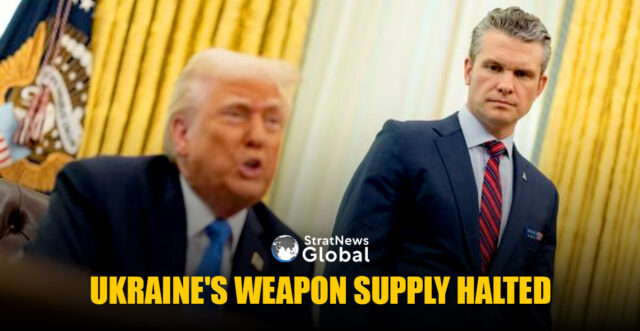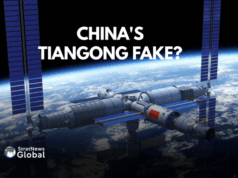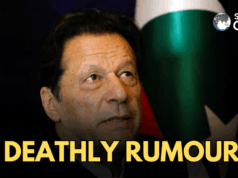About a week into Donald Trump’s second term, the U.S. military directed three cargo airlines operating from Dover Air Force Base in Delaware and a base in Qatar to cancel 11 flights carrying artillery shells and other arms bound for Ukraine—an order that caught the White House off guard.
In a matter of hours, frantic questions reached Washington from Ukrainians in Kyiv and from officials in Poland, where the shipments were coordinated. Who had ordered the U.S. Transportation Command, known as TRANSCOM, to halt the flights? Was it a permanent pause on all aid? Or just some?
Top national security officials — in the White House, the Pentagon and the State Department — couldn’t provide answers. Within one week, flights were back in the air.
The verbal order originated from the office of Pete Hegseth, the secretary of defence, according to TRANSCOM records. A TRANSCOM spokesperson said the command received the order via the Pentagon’s Joint Staff.
The cancelations came after Trump wrapped up a January 30 Oval Office meeting about Ukraine that included Hegseth and other top national security officials, according to three sources familiar with the situation. During the meeting, the idea of stopping Ukraine aid came up, said two people with knowledge of the meeting, but the president issued no instruction to stop aid to Ukraine.
Trump Unaware Of Hegseth’s Order
The president was unaware of Hegseth’s order, as were other top national security officials in the meeting, according to two sources briefed on the private White House discussions and another with direct knowledge of the matter.
Asked to comment on this report, the White House said that Hegseth had followed a directive from Trump to pause aid to Ukraine, which it said was the administration’s position at the time. It did not explain why top national security officials in the normal decision making process didn’t know about the order or why it was so swiftly reversed.
“Negotiating an end to the Russia-Ukraine War has been a complex and fluid situation. We are not going to detail every conversation among top administration officials throughout the process,” said Karoline Leavitt, the White House spokeswoman. “The bottom line is the war is much closer to an end today than it was when President Trump took office.”
Confusion In Security Policy
The multiday pause of the flights, confirmed by five people with knowledge of it, also shows confusion in how the administration has created and implemented national security policy. At the Pentagon, the disarray is an open secret, with many current and former officials saying the department is plagued by internal disagreements on foreign policy, deep-seated grudges, and inexperienced staff.
“This is consistent with the administration’s policy to move fast, break things and sort it out later. That is their managing philosophy,” said Mark Cancian, a retired Marine officer and defence expert with the Center for Strategic and International Studies think tank. “That is great for Silicon Valley. But when you’re talking about institutions that have been around for hundreds of years, you are going to run into problems.”
The Ukrainians quickly asked the administration through multiple channels but had difficulty obtaining any useful information, according to a Ukrainian official with direct knowledge of the situation.
In later conversations with the Ukrainians, the administration wrote off the pause as “internal politics,” said the source. Ukrainian officials did not respond to requests for comment.
The canceled flights contained weapons that had long been approved by the Biden administration, authorized by lawmakers on Capitol Hill.
Flights Canceled
According to two sources with knowledge of the meeting, Hegseth arrived at the January 30 Oval Office meeting with Trump with a memo drafted by some of his top policy advisers, advocating that their boss push the White House to consider pausing weapons deliveries to Ukraine to gain leverage in peace negotiations with Russia.
The sources said the secretary attended the meeting with other top officials involved in Ukraine policy, including National Security Adviser Mike Waltz and Ukraine envoy Keith Kellogg. The group broadly discussed U.S. policy on Ukraine and Russia, including potentially tightening sanctions on Moscow.
It’s not clear the extent to which Hegseth proposed stopping aid during the meeting, but the idea came up in discussions, said one of the sources and another person familiar with the meeting.
Trump had threatened to freeze aid repeatedly on the campaign trail, but had yet to do so. And during the meeting, he again declined to stop aid to Ukraine or order Hegseth to implement any policy changes when it came to sending equipment to Kyiv, the sources said.
Growing Infighting
When Trump entered office, aid to Ukraine continued flowing and he pledged to work with Ukraine and Russia to end the war – or at the very least broker a ceasefire.
Two of his most prominent envoys, Kellogg, a supporter of Kyiv who worked with Trump in his first administration, and Steve Witkoff, a real-estate magnate and close friend of the president, set out to negotiate with both parties.
Separately, at the Pentagon, some of Hegseth’s policy advisers privately started drafting proposals to pull back American support for Ukraine, according to two sources briefed on the matter.
The infighting has complicated the policy-making process, according to a person familiar with the matter and four other sources.
At a time when Kellogg and Witkoff are trying to broker a peace deal with Russia and Ukraine, the staffers have advocated behind the scenes for the U.S. to draw back its support for Kyiv – a policy that has angered Ukrainian officials and pressured European allies to fill the gap, five people with knowledge of the situation said.
Despite the brief pause in February and the longer one that began in early March, the Trump administration has resumed sending the last of the aid approved under U.S. President Joe Biden. No new policy has been announced.
(With inputs from Reuters)





